The main objective of this research project is to develop a modular bottom-up approach to construct device favorable nanostructures consisting of multiple components with precise spatial placement and designated functionalities. Our method is built upon supramolecular chemistry through cooperation of several orthogonal non-covalent interactions including block copolymer (BCP) self-assembly, regio-regular poly(3-hexylthiophene) P3HT crystallization, fullerene aggregation and complementary hydrogen bonding. As schematically shown below, BCPs containing a P3HT segment and a functionalized low bandgap CP block will be prepared. The functional groups tethered from the low bandgap segment are designed to be polar and capable of forming hydrogen bonds (HBs) and coordination bonds. Addition of polar solvents into well-dissolved BCP solutions will induce crystallization of the P3HT block into NFs, outside of which the polar segment remains solubilized to form the shell. Modified fullerenes, semiconductor quantum dots (QDs), magnetic nanoparticles, etc., designed to interact specifically with these polar functional groups, can then be attached non-covalently to form the core-shell composite NFs.
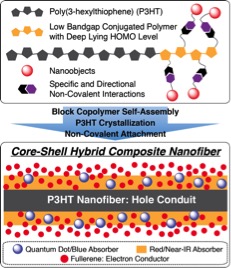
The strategy can potentially lead to device favorable attributes in a simple one-pot solution process: (1) broad light absorption windows–QD for the blue and/or red, P3HT for the green/yellow and the low bandgap CP for the red/near IR; (2) high mobilities for both types of charges–P3HT NFs as the sole hole conduit and fullerenes as the only electron conductor; (3) optimized morphology for efficient charge separation and transport via precise size control and placement of different building blocks; and (4) thermally stable morphologies from BCP self-assembly, P3HT crystallization and the non-covalent interactions existing among all constituents. Some of the representative results and publications are shown below.
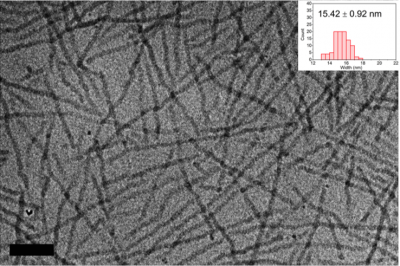
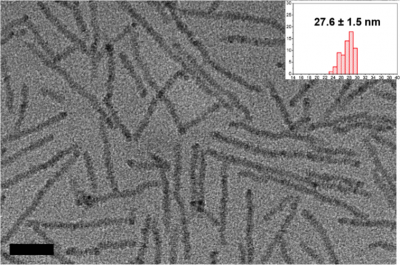
BCP Nanofibers BCP Nanofibers + Fullerene
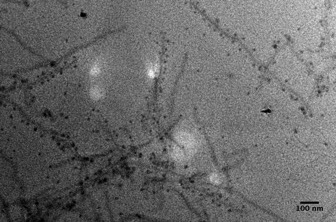
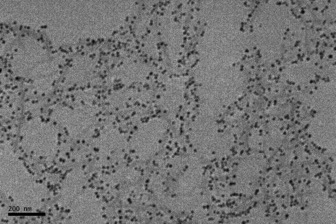
BCP Nanofibers + CdSe QDs BCP Nanofibers + Fe2O3 Nanoparticles
Representative Publications.
“Core/Shell Conjugated Polymer/Quantum Dot Composite Nanofibers through Orthogonal Non-Covalent Interactions.” Watson II, B. W.; Meng, L.; Fetrow, C.#and Qin Y.* Polymers 2016, 8, 408. Link to Article
“Stable and Controllable Polymer/Fullerene Composite Nanofibers through Cooperative Noncovalent Interactions for Organic Photovoltaics.” Li, F.; Yager, K. G.; Dawson, N. M.; Jiang, Y.-B.; Malloy, K. J.; Qin, Y.* Chem. Mater. 2014, 26, 3747-3756. Link to Article
“Complementary Hydrogen Bonding and Block Copolymer Self-Assembly in Cooperation toward Stable Solar Cells with Tunable Morphologies.” Li, F.; Yager, K. G.; Dawson, N. M.; Yang, J.; Malloy, K. J.; Qin, Y.* Macromolecules 2013, 46, 9021-9031. Link to Article